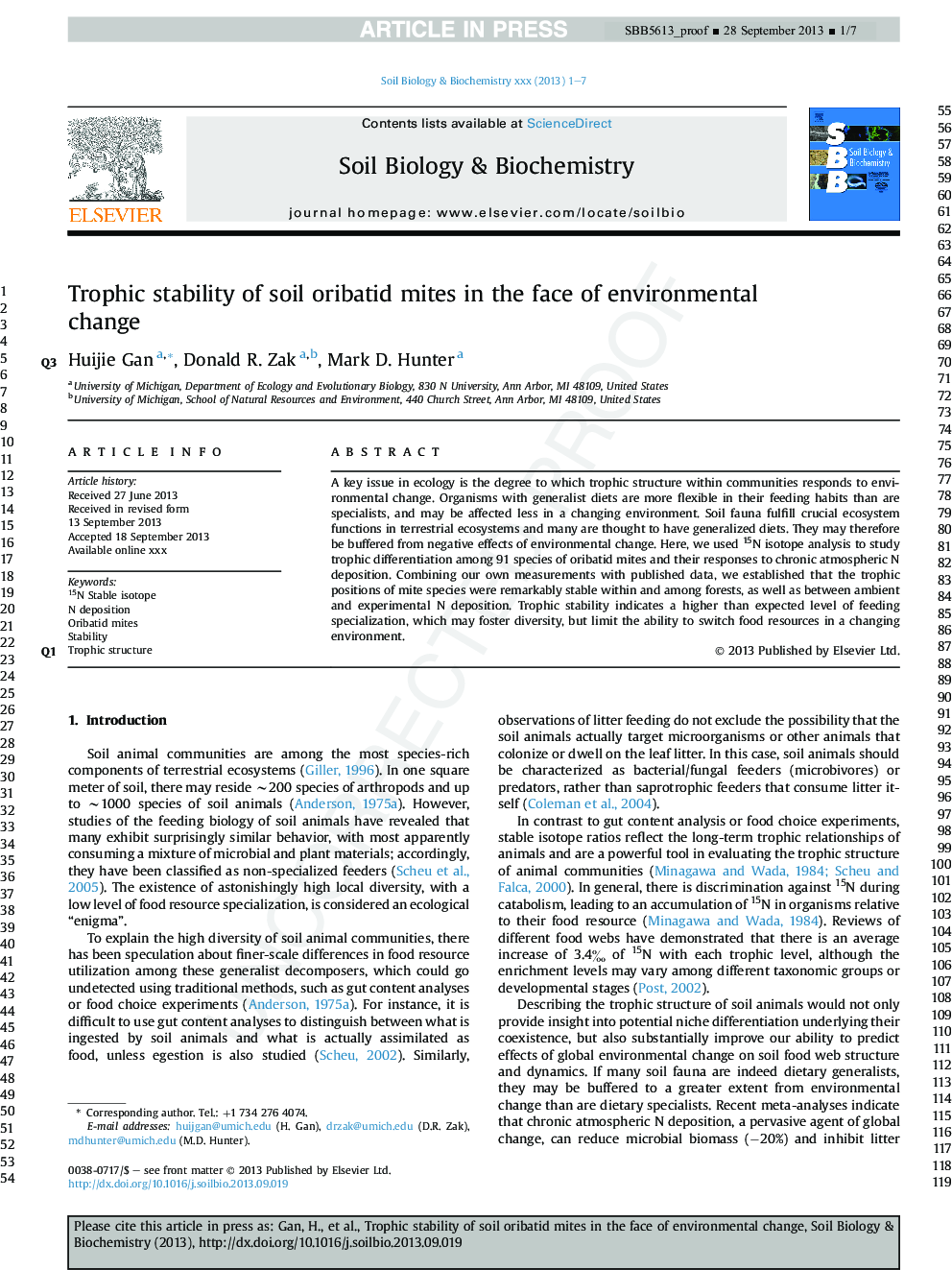| Article ID | Journal | Published Year | Pages | File Type |
|---|---|---|---|---|
| 8364970 | Soil Biology and Biochemistry | 2014 | 7 Pages |
Abstract
A key issue in ecology is the degree to which trophic structure within communities responds to environmental change. Organisms with generalist diets are more flexible in their feeding habits than are specialists, and may be affected less in a changing environment. Soil fauna fulfill crucial ecosystem functions in terrestrial ecosystems and many are thought to have generalized diets. They may therefore be buffered from negative effects of environmental change. Here, we used 15N isotope analysis to study trophic differentiation among 91 species of oribatid mites and their responses to chronic atmospheric N deposition. Combining our own measurements with published data, we established that the trophic positions of mite species were remarkably stable within and among forests, as well as between ambient and experimental N deposition. Trophic stability indicates a higher than expected level of feeding specialization, which may foster diversity, but limit the ability to switch food resources in a changing environment.
Related Topics
Life Sciences
Agricultural and Biological Sciences
Soil Science
Authors
Huijie Gan, Donald R. Zak, Mark D. Hunter,
